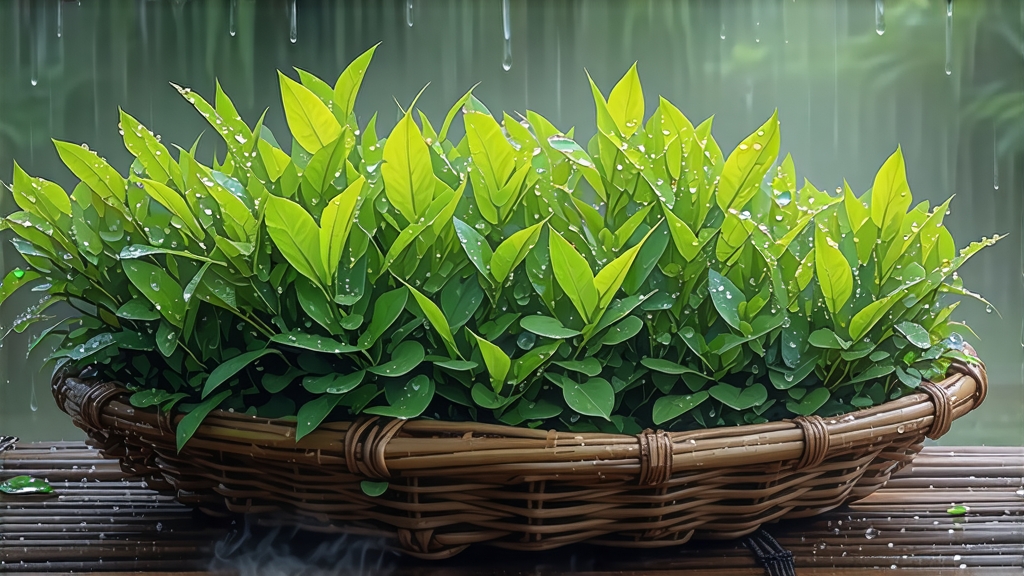
Longjing, literally “Dragon-Well,” is more than a tea; it is a liquid postcard from the hills that cradle Hangzhou’s West Lake. For eight centuries poets, emperors and everyday farmers have argued about the exact moment the first spring sprout should be plucked, yet all agree that when the leaf meets the well-water, time slows and the city’s neon fades into bamboo shadows. To understand China’s most celebrated green tea, one must follow three intertwined dragons: the dragon of history, the dragon of craft, and the dragon of the senses.
Historical whispers place Longjing’s birth during the Song dynasty, but its fame crystallized in the Qing. Legend says the Qianlong Emperor, while visiting the Hugong Temple near Lion Peak, watched village women threading tender tips into their baskets. Intrigued, he joined the picking, momentarily forgetting court etiquette. A sudden urgent dispatch arrived; he tucked the freshly plucked leaves into his sleeve and rode back to Hangzhou. Later, the leaves, slightly crushed and still warm from his imperial arm, released an unforgettable fragrance. He christened the eighteen bushes before the temple “Imperial Trees,” decreeing their harvest tribute solely for the throne. Those same bushes still stand, fenced yet green, a living reminder that tea can be both humble leaf and state symbol.
Today Longjing is not a single tea but a constellation of micro-appellations. Xihu Longjing, grown inside the original West Lake district, is protected by a national origin law; the leaf is flat, jade-green, and carries a pronounced orchid-chestnut bouquet. Qiantang Longjing, from the broader Hangzhou prefecture, offers a slightly bolder, grassier cup. The most elusive is Pre-Qingming Longjing, picked before the Qingming festival when nights are still cool, bugs few, and amino acids concentrated; it steeps into a broth so gentle it feels like sipping cloud. Each village adds its own accent: Meijiawu whispers sweetness, Shífeng delivers mineral depth, Wengjiashan lingers with white sesame notes. To the uninitiated the differences may seem subtle, yet to a Hangzhou taxi driver they are as obvious as the distinction between Brooklyn and Manhattan accents.
Craft begins in the dark. Pickers rise at 4 a.m. when dew acts as natural preservative. The standard is one bud plus one unfolding leaf, no longer than 2.5 cm, a specification enforced by calloused thumbs rather than rulers. By 9 a.m. the baskets arrive at the village cooperative where withering is skipped—Longjing is about immediacy. Instead, the leaves are spread thinly on bamboo trays and allowed to breathe for two hours, just long enough for field heat to dissipate. Now comes the defining act: pan-firing in a bare wok heated to 180 °C. Masters, most of them women in their fifties, rhythmically press, tumble, and flick 250 grams of leaves for twenty-five minutes. The motion is a marriage of martial arts and dance: fingers flat like tiger paws, wrist rotating to cool the leaf, palm brushing to flatten. If the temperature drops too low, grassy astringency remains; too high, the leaf burns and the signature “bean” aroma collapses. When done correctly, moisture falls from 75 % to below 6 % without ever entering an oven, leaving the leaf in that iconic sword-shape, edges smooth as jade tiles. The final “hui guo” or return-to-pot, a cooler 80 °C, lasts five minutes and locks in chestnut sweetness. Watching a master perform this is like seeing a blacksmith fold steel: each pass adds soul.
Water is the silent half of the equation. Dragon-Well derives its name from the spring-fed well at Longjing village where dense groundwater once created a swirling pattern resembling a Chinese dragon. Locals insist that only water from this aquifer, slightly sweet and low in calcium, can unfurl the tea’s full spectrum. Failing a pilgrimage to the well, use spring water filtered through charcoal; distilled water flattens the amino acids, while hard tap water precipitates tannins into a murky fog. Pre-heat your glass or gaiwan by swirling 80 °C water, then pour it off. Use three grams of leaf—about a level tablespoon—for every 150 ml. The traditional “three-stage” infusion is theater: first pour the water in a high, thin stream so that the leaves somersault,